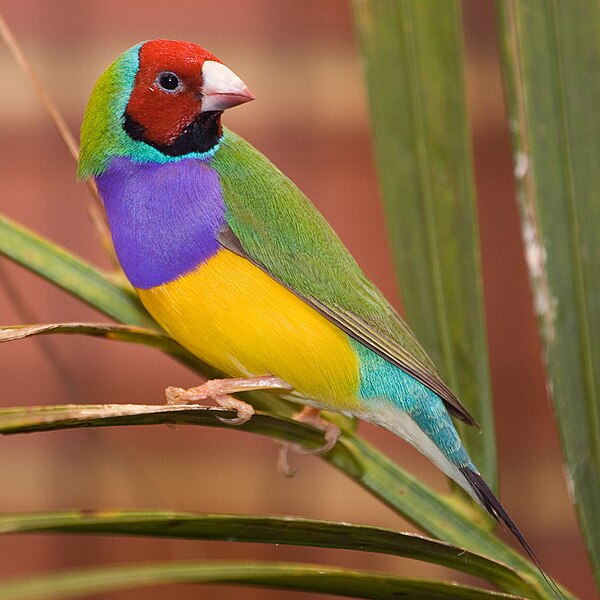Please see Part I of this article for a look at Gouldian finch (Erythrura gouldiae) natural history and emerging research items. I’ll cover the care of these popular beauties in a future article, but would like to point out a few of their unique requirements here.
Cage Size
 Gouldian finches require more room than similarly-sized finches…there is some evidence that cramping may lead to metabolic disorders. Please provide yours with a large flight cage, or, if possible, an outdoor aviary.
Gouldian finches require more room than similarly-sized finches…there is some evidence that cramping may lead to metabolic disorders. Please provide yours with a large flight cage, or, if possible, an outdoor aviary.
Group-housing seems to stimulate reproductive success, another factor that favors using an outdoor aviary, but you’ll need to be aware of aggression in such situations.
Temperature
Hailing from a warm climate, Gouldian finches are rather cold-sensitive, and are best housed at temperatures of 75-78 F, with an ambient humidity of 50-75%.
Live Food and Protein
As mentioned above, Gouldians rely heavily upon insects as food for part of the year. Be sure to provide ample feedings of live insects and canned invertebrates (silkworms, grasshoppers, crickets, etc.). The Zoo Med Bug Napper, an effective insect trap, is a wise investment for the Gouldian finch owner.
Egg food, hard boiled egg and young sprouts are all appreciated as well.
Further Reading
For more information on adding insects to the diets of Gouldian and other finches, please see my article Feeding Insects to Pet Birds.
Image referenced from Wikipedia and originally posted by Martybugs
 That Bird Blog – Bird Care and History for Pet Birds
That Bird Blog – Bird Care and History for Pet Birds


